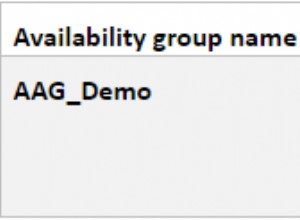Quello che ti serve è firmare la procedura.
Consentitemi di prendere in prestito l'impostazione dal collegamento fornito da M.Ali nel suo commento (Autorizzazioni utente di SQL Server per stored procedure e tabelle sottostanti ):
use Test
go
if exists (select * from sys.syslogins where name = 'UserA')
drop login UserA
create login UserA with password = 'Welcome'
if exists (select * from sys.syslogins where name = 'UserB')
drop login UserB
create login UserB with password = 'Welcome'
if exists (select * from sys.syslogins where name = 'UserC')
drop login UserC
create login UserC with password = 'Welcome'
if exists (select * from sys.tables where name = 'Customers' and schema_name(schema_id) = 'SchemaA')
drop table SchemaA.Customers
if exists (select * from sys.schemas where name = 'SchemaA')
drop schema SchemaA
if exists (select * from sys.sysusers where name = 'UserA')
drop user UserA
if exists (select * from sys.tables where name = 'Orders' and schema_name(schema_id) = 'SchemaB')
drop table SchemaB.Orders
if exists (select * from sys.procedures where name = 'GetCustomerOrderInfo' and schema_name(schema_id) = 'SchemaB')
drop procedure SchemaB.GetCustomerOrderInfo
if exists (select * from sys.schemas where name = 'SchemaB')
drop schema SchemaB
if exists (select * from sys.sysusers where name = 'UserB')
drop user UserB
if exists (select * from sys.sysusers where name = 'UserC')
drop user UserC
create user UserA for login UserA
alter role db_owner add member UserA
go
create schema SchemaA authorization UserA
go
create user UserB for login UserB
alter role db_owner add member UserB
go
create schema SchemaB authorization UserB
go
create user UserC for login UserC
create table SchemaA.Customers (id int identity)
create table SchemaB.Orders (id int identity, CustomerId int)
go
create procedure SchemaB.GetCustomerOrderInfo
as
select *
from SchemaB.Orders o
join SchemaA.Customers c
on c.id = o.CustomerId
go
Questa era la configurazione, grazie ad Andomar.
Possiamo dare all'utente il permesso di eseguire la procedura:
grant execute on SchemaB.GetCustomerOrderInfo to UserC
execute as login = 'UserC'
exec SchemaB.GetCustomerOrderInfo
-- The SELECT permission was denied on the object 'Customers', database 'Test', schema 'SchemaA'.
revert
Questo non era abbastanza buono. Quello che possiamo fare è creare un certificato nel database, un utente del database su questo certificato, dare a quell'utente le autorizzazioni appropriate (ruolo db_owner in questo esempio), e quindi firmare la procedura con il certificato:
create certificate cert_raiser
encryption by password = 'pGFD4bb925DGvbd2439587y'
with subject = 'raiser',
expiry_date = '01/01/2114';
go
create user cert_user from certificate cert_raiser
go
alter role db_owner add member cert_user
go
add signature to SchemaB.GetCustomerOrderInfo
by certificate cert_raiser
with password = 'pGFD4bb925DGvbd2439587y';
go
Dovrebbe funzionare bene ora.
Punti da fare:l'utente creato sul certificato non può essere utilizzato come un utente normale, non c'è login con esso e non è un problema di sicurezza; tutte le autorizzazioni che diamo a quell'utente verranno aggiunte al contesto in cui viene eseguita la procedura quando aggiungiamo una firma; Se modifichiamo la procedura, dobbiamo firmarla di nuovo.




